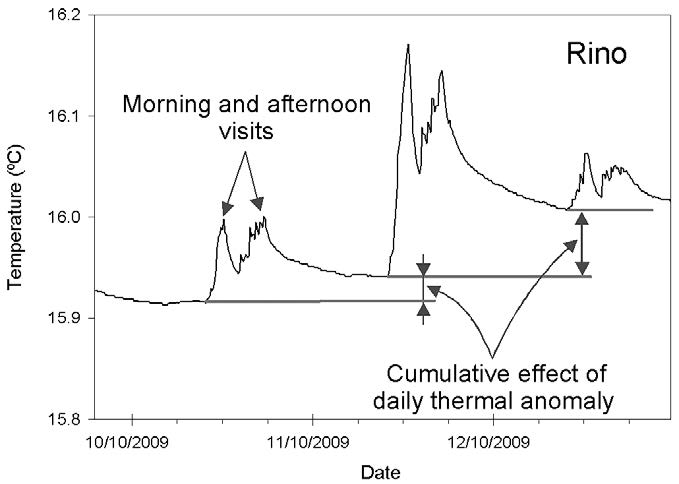The effect of visitors in a touristic cave and the resulting constraints on natural thermal conditions for palaeoclimate studies (Eagle Cave, central Spain)
DOI:
https://doi.org/10.3986/ac.v39i3.78Abstract
Temperature in Eagle Cave, central Spain, was measured over a year to determine the effect of tourists on the natural environment. The mean cave temperature was 15.6°C in 2009, witha seasonal amplitude of <0.4°C. Access of tourists to the cavern produces thermal anomalies of <0.15°C, whichare recovered overnight in most cases. During days withhighvisitor numbers, cumulative thermal anomalies may persist from one day to the next, causing an increase of cave temperature for longer periods. However, this anthropogenic effect disappears soon after the number of tourists reduces, lasting less than a week in most cases. Cumulative thermal anomalies are <0.02°C during most of the year and <0.1°C in periods withlarge number of visitors. The anthropogenic effect on cave temperature is non-persistent and has a small magnitude in comparison withnatural oscillations. Thus, long-term absolute temperatures obtained from Eagle Cave are not affected by visitors. The input of thermal energy caused by tourists is absorbed as latent heat by the cave (causing evaporation), whichprevents the increase of baseline temperatures in the environment. A condensation process occurs over cave walls and speleothems. This is the result of cooling the atmosphere during the thermal equilibration withcave walls once visitors leave. Althoughcondensation is found in Eagle Cave, the magnitude of the process is not enoughto cause any significant condensation corrosion that could damage speleothems as a result of the tourist visits. The cave is in thermal equilibrium withsurface temperatures, and calibration studies will produce suitable results for palaeoclimate studies despite being a tourist cavern.
Downloads

Downloads
Published
How to Cite
Issue
Section
License
Authors guarantee that the work is their own original creation and does not infringe any statutory or common-law copyright or any proprietary right of any third party. In case of claims by third parties, authors commit their self to defend the interests of the publisher, and shall cover any potential costs.
More in: Submission chapter




